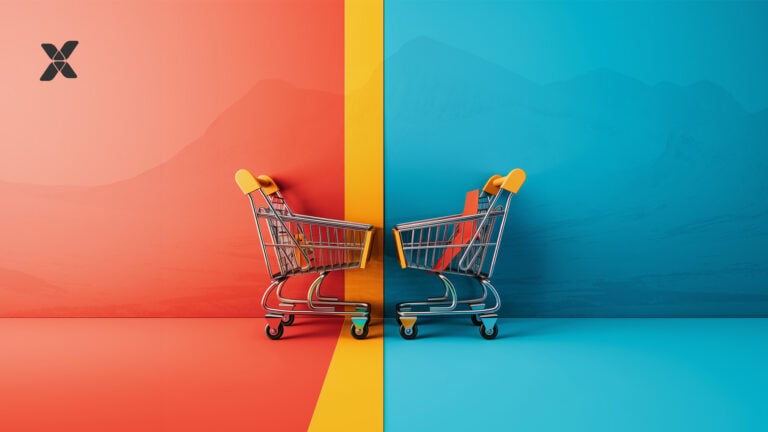Today’s food and beverage (F&B) industry bears little resemblance to the one of just a decade ago. Connected sensors monitor fermentation processes in real time, predictive algorithms forecast ingredient price fluctuations and consumers scan products to instantly view their complete farm-to-shelf journey. Digital transformation has fundamentally altered not just how we produce food, but how we ensure its safety, optimize its quality and build consumer trust.
Learn about the key technologies driving digital transformation and how your business can create successful strategies to take advantage of these advancements.
Key takeaways
- The need to increase operational efficiency, consumers who expect more transparency and regulatory pressures are the driving forces behind digital transformation in the food & beverage industry.
- Digital tools like automation, AI, blockchain and AR are reshaping how F&B companies ensure safety, streamline operations, and connect with consumers.
- Successful transformation starts with clear goals, scalable solutions, a supportive culture, and guidance from digital experts.
The imperative for digital transformation
Few things are more surprising than how analog the food and beverage industry can still be. Nowhere was this more evident than during the Romaine lettuce E. coli outbreaks of 2018 and 2019, which shook consumer confidence and exposed weaknesses in the U.S. food supply chain. Grocery shelves were cleared and millions of dollars were lost: not because of what we didn’t know, but because of what we couldn’t trace fast enough.
This is just one example of how a lack of transparency and real-time traceability caused widespread disruption. It also shows that the importance of digital transformation in the food & beverage industry can no longer be ignored.
In fact, several factors are propelling the F&B industry toward digital adoption:
- Operational efficiency: Automation and robotics are streamlining production processes, reducing costs, and enhancing product quality.
- Consumer expectations: Modern consumers demand transparency, convenience, and personalized experiences, necessitating digital solutions that can deliver on these fronts.
- Regulatory compliance: Stringent food safety regulations require robust tracking and traceability mechanisms, which digital tools can provide.
- Supply chain complexity: Global supply chains need real-time visibility and agility, achievable through integrated digital systems.
Key technologies driving transformation
As consumer expectations evolve, regulations tighten and supply chains grow more complex, the food and beverage industry faces mounting pressure to modernize. Four key technologies exemplify how digital transformation can address these challenges.
1. Automation and robotics
Implementing automation in manufacturing processes enhances efficiency and consistency, from packaging to quality control. Robotic systems can handle repetitive tasks, reduce human error, and maintain high hygiene standards, which are critical in food production.
2. Artificial intelligence (AI) and machine learning
AI is much more than just big data: in fact, it’s all about smarter decisions, whether it’s related to forecasting demand, reducing waste or optimizing operations in general. AI and machine learning help companies respond faster to market trends, improve operational efficiency, and even anticipate equipment failures before they happen.
3. Blockchain technology
Food recalls and transparency demands have made traceability indispensable (remember the Romaine lettuce outbreak we discussed earlier?). Blockchain creates a tamper-proof record of a product’s journey, giving companies a powerful tool for ensuring food safety, meeting regulatory requirements, and earning consumer trust in an increasingly scrutinized market.
4. Augmented reality (AR)
AR enhances engagement by providing interactive product information for tech-savvy consumers. For instance, scanning a product label could reveal its nutritional content, origin, and preparation methods, enriching the consumer experience.
Strategies for successful digital transformation
Start with clear objectives
Define what you aim to achieve, be it improved efficiency, better compliance, or enhanced customer engagement. Clear goals guide technology selection and implementation.
Invest in scalable solutions
Seasonal demand shifts and changing consumer tastes can be hard to anticipate, so choose technologies that can evolve with your F&B business. Scalable solutions ensure long-term viability and adaptability to changing market conditions.
Foster a digital culture
Digital tools only work when your team knows how to use them. Encourage a culture that embraces change and continuous learning, for instance by providing training and support to help employees adapt to new technologies and processes.
Collaborate with experts
Partnering with digital transformation specialists can provide valuable insights and accelerate implementation. Expert guidance can also help navigate challenges and optimize outcomes.
Vaimo: Your partner in digital transformation for the food & beverage industry
Digital transformation makes all the difference for the food & beverage industry, from how your raw ingredients are sourced and tracked to how your finished products move through increasingly complex supply chains.
At Vaimo, we specialize in guiding F&B businesses through their digital transformation journeys. Need a hand to implement digital tools in the best way for your business? We’re happy to help. Find out more about our services for businesses just like yours.






